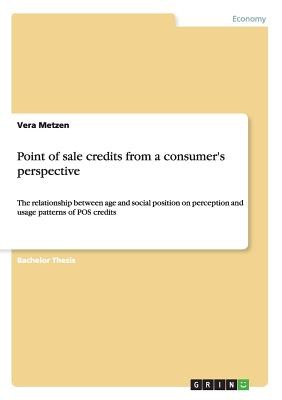
- We will send in 10–14 business days.
- Author: Vera Metzen
- Publisher: GRIN Verlag
- Year: 2016
- Pages: 80
- ISBN-10: 366811160X
- ISBN-13: 9783668111608
- Format: 14.8 x 21 x 0.5 cm, softcover
- Language: English
- SAVE -10% with code: EXTRA
Reviews
Description
Bachelor Thesis from the year 2009 in the subject Business economics - Miscellaneous, grade: 1,4, Heidelberg International Business Academy, language: English, abstract: Being a traditional emergency credit for the poorer members of society for a long time, most people thought that POS credits were 'unsolid' and thus did not use it. Nowadays, this situation has changed for a variety of reasons and several authors have under-taken research on the subject in general or from a retailer's perspective. This piece of work focuses on the consumer's perspective of POS credits and shows that several factors, such as age, discretionary income and social position determine a person's perception and usage pattern of the POS credit. In order to identify these relationships the author has undertaken primary and secon-dary research. The knowledge of authors who have previously written on the subject has been used to design a questionnaire that allows for a considerable analysis of the above mentioned relationships. For primary research 100 anonymous people have been questioned in a shopping cen-tre in Heidelberg, Germany using an interview administered quantitative questionnaire. Most of the results are in line with the findings of other authors. However, primary re-search shows that society as a whole still believes that a POS credit is an emergency credit and that most people's perception of the credit is not as favourable as it is often assumed. Moreover, specific reasons for a positive or negative perception are strongly related to a person's age rather than to social position. Most of users of this financing tool seem to use it for acquiring non-necessary prestig-ious items. The estimated price of the item rises with the person's age and income. Main motives for using the credit instead of a bank loan could not be identified due to the sample's size. However, primary research implies that using POS credits might often be subject to previous friends' experience.
EXTRA 10 % discount with code: EXTRA
The promotion ends in 5d.14:58:40
The discount code is valid when purchasing from 10 €. Discounts do not stack.
- Author: Vera Metzen
- Publisher: GRIN Verlag
- Year: 2016
- Pages: 80
- ISBN-10: 366811160X
- ISBN-13: 9783668111608
- Format: 14.8 x 21 x 0.5 cm, softcover
- Language: English English
Bachelor Thesis from the year 2009 in the subject Business economics - Miscellaneous, grade: 1,4, Heidelberg International Business Academy, language: English, abstract: Being a traditional emergency credit for the poorer members of society for a long time, most people thought that POS credits were 'unsolid' and thus did not use it. Nowadays, this situation has changed for a variety of reasons and several authors have under-taken research on the subject in general or from a retailer's perspective. This piece of work focuses on the consumer's perspective of POS credits and shows that several factors, such as age, discretionary income and social position determine a person's perception and usage pattern of the POS credit. In order to identify these relationships the author has undertaken primary and secon-dary research. The knowledge of authors who have previously written on the subject has been used to design a questionnaire that allows for a considerable analysis of the above mentioned relationships. For primary research 100 anonymous people have been questioned in a shopping cen-tre in Heidelberg, Germany using an interview administered quantitative questionnaire. Most of the results are in line with the findings of other authors. However, primary re-search shows that society as a whole still believes that a POS credit is an emergency credit and that most people's perception of the credit is not as favourable as it is often assumed. Moreover, specific reasons for a positive or negative perception are strongly related to a person's age rather than to social position. Most of users of this financing tool seem to use it for acquiring non-necessary prestig-ious items. The estimated price of the item rises with the person's age and income. Main motives for using the credit instead of a bank loan could not be identified due to the sample's size. However, primary research implies that using POS credits might often be subject to previous friends' experience.


Reviews